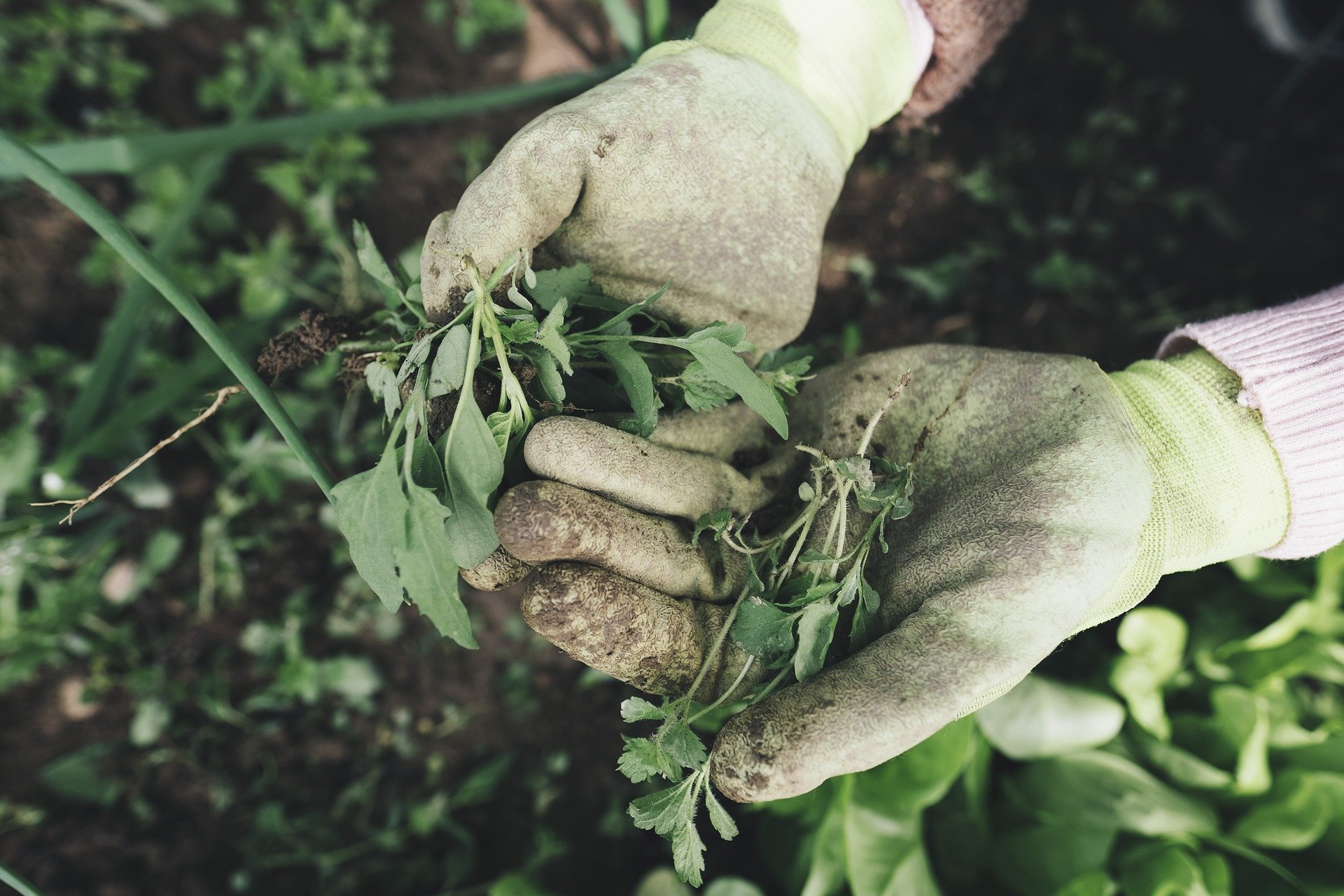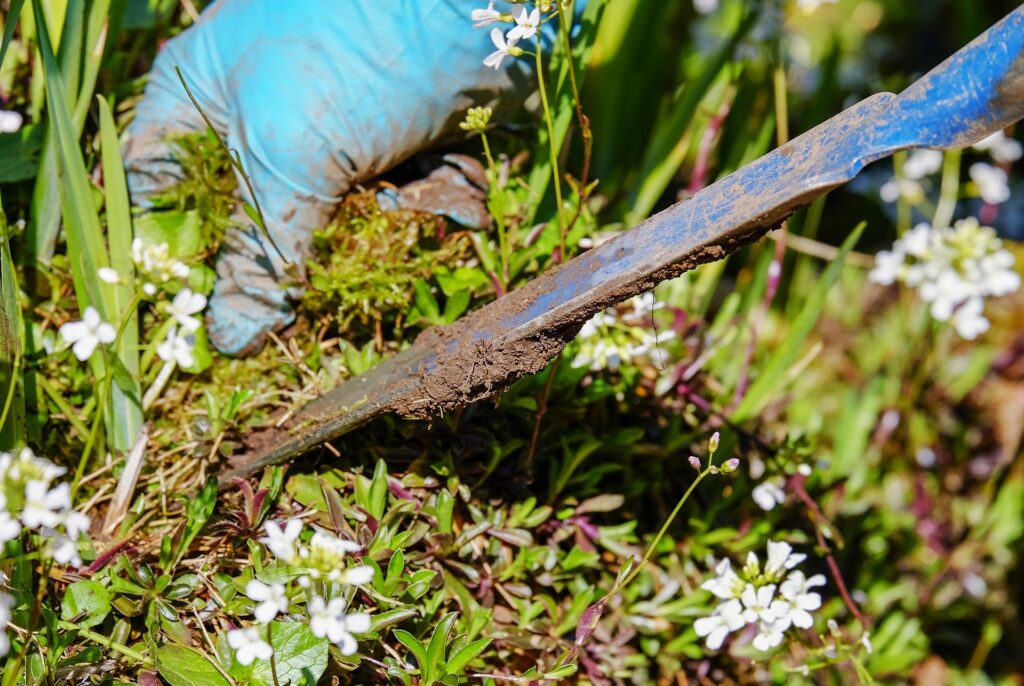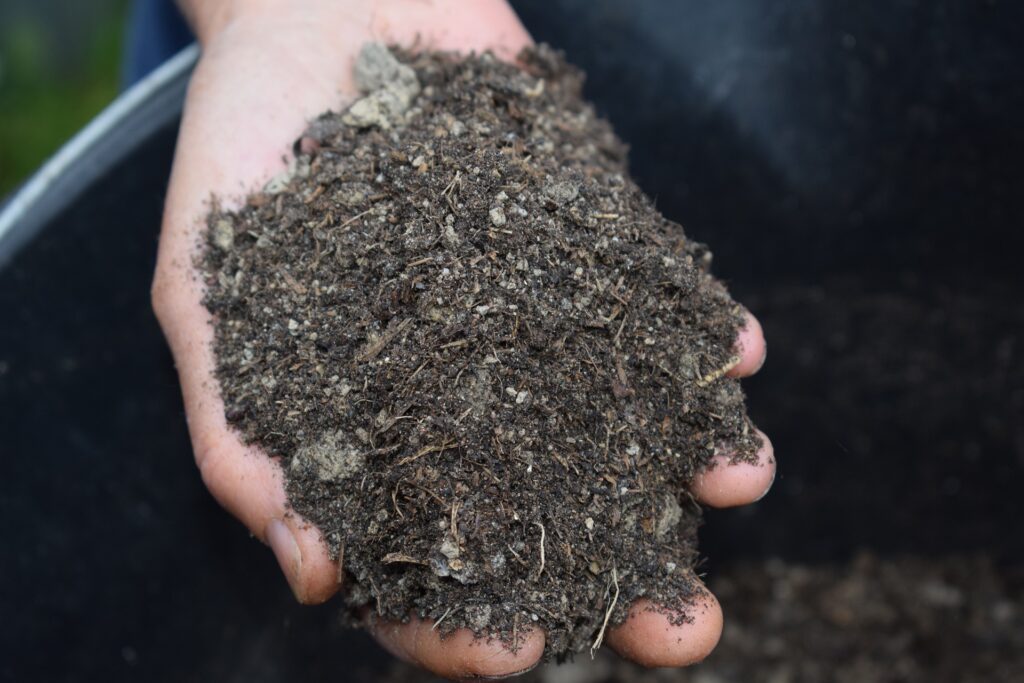
It’s spring and weeds are springing! A common gardener’s saying is that a weed is “just a plant growing in the wrong place.” We know there are a number of weeds that are edible or used medicinally such as purslane and dandelions. Nevertheless, we don’t want them in our garden beds.
Well, why not? Mostly we don’t like the way they look, but more importantly, they compete with our plants for water and nutrients. If big enough, they can shade and crowd out the desired plants.
We know we’ll never totally get rid of weeds so how can we manage them?

Don’t wait—early and often is the best way to go about weeding. Do a thorough weeding in early spring. After that, pull whatever you notice as you check your beds. You will find it surprisingly easy to keep up in this manner.
Do pull weeds before they flower or go to seed to slow down weed coverage.
Don’t wait very long to apply mulch. If you don’t cover the earth, nature will fill the void with weeds. But avoid the temptation to use too much. Just three inches deep is enough to keep weeds down, but still allow air and water to reach the roots of your perennials.

Do use shredded bark, bark chunks or pine straw for mulching perennial beds. Straw or grass clippings work well in vegetable gardens. Use a thicker layer of mulch on paths to keep from compressing the soil.
Don’t make mulch volcanoes around trees and shrubs. Leave a few inches open to prevent disease and pest infestation.
Do follow these suggestions to enjoy your (nearly) weed free garden this year.